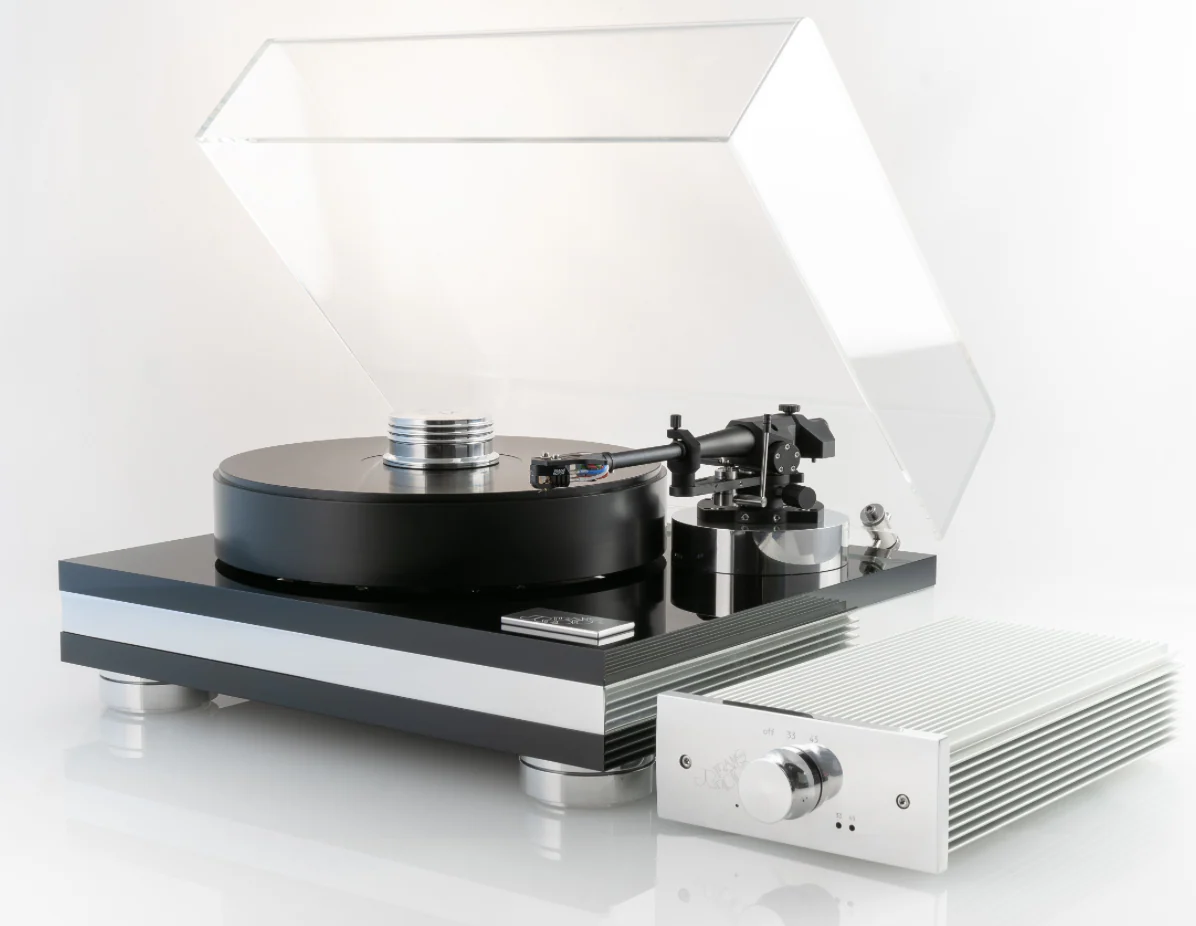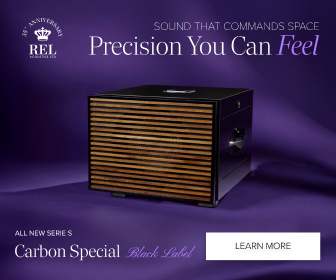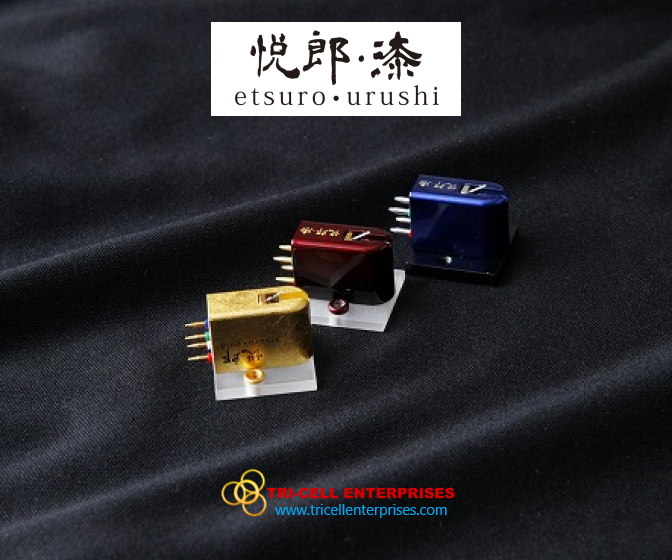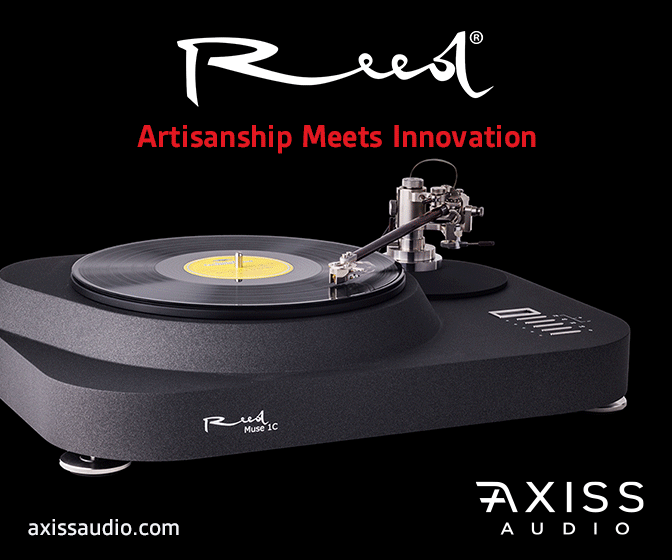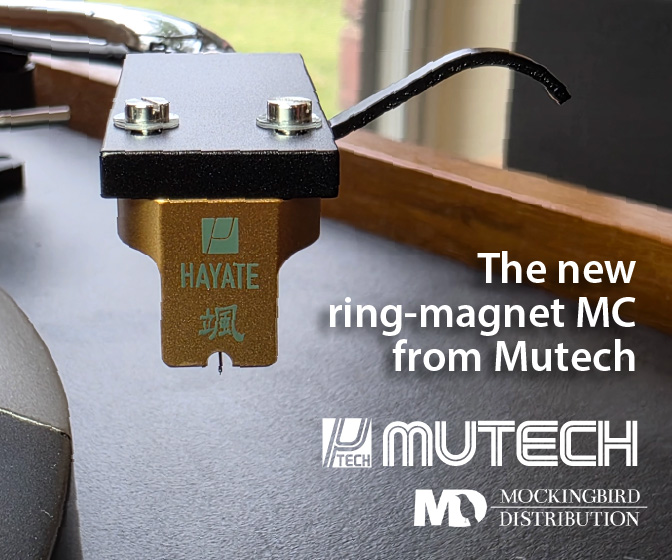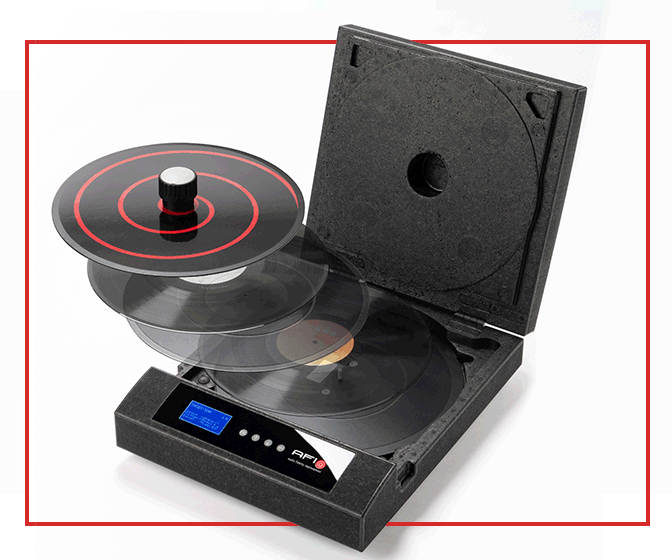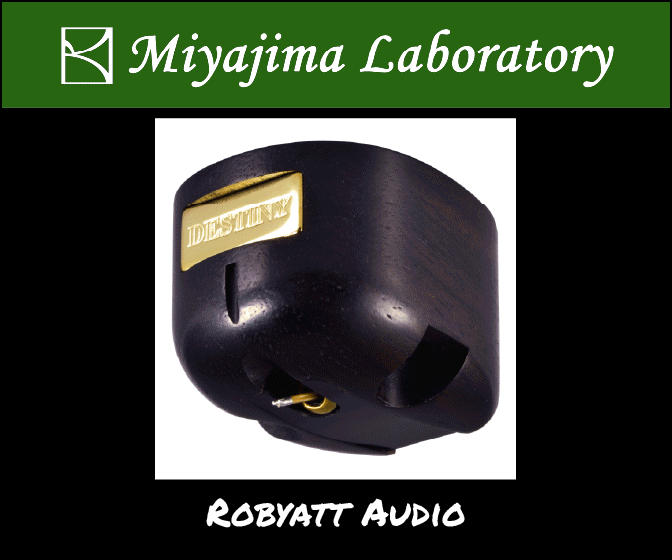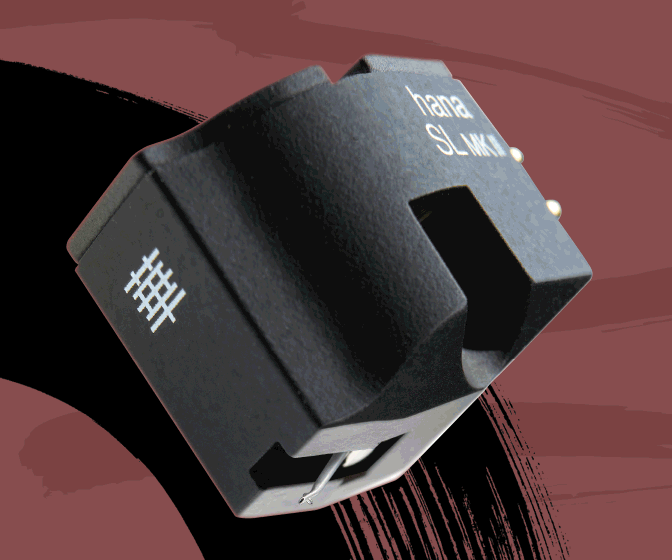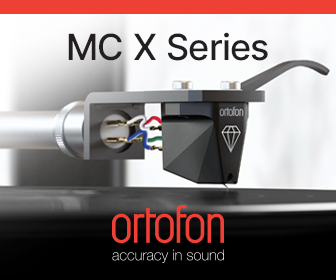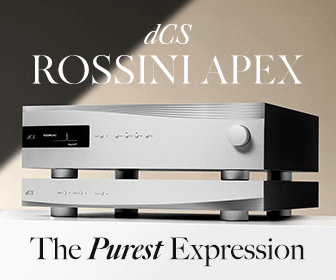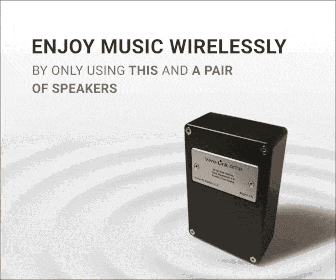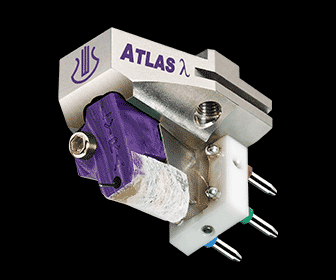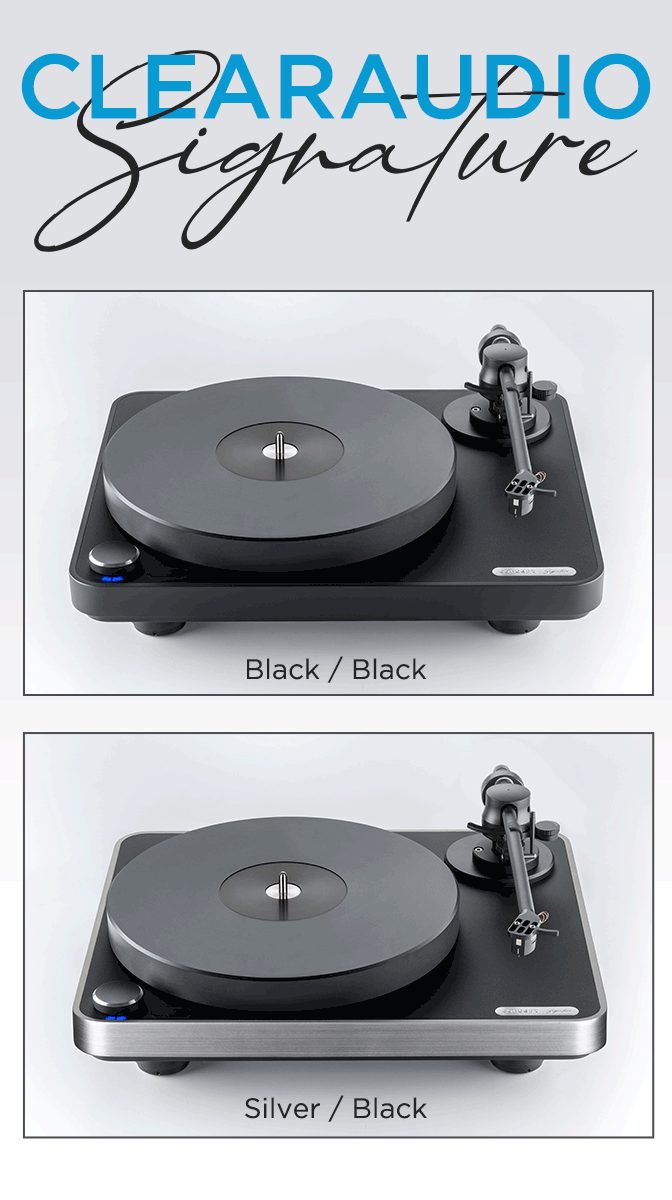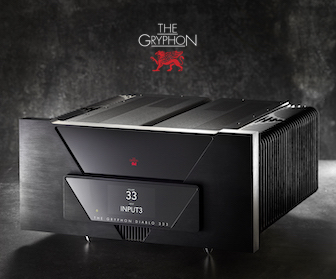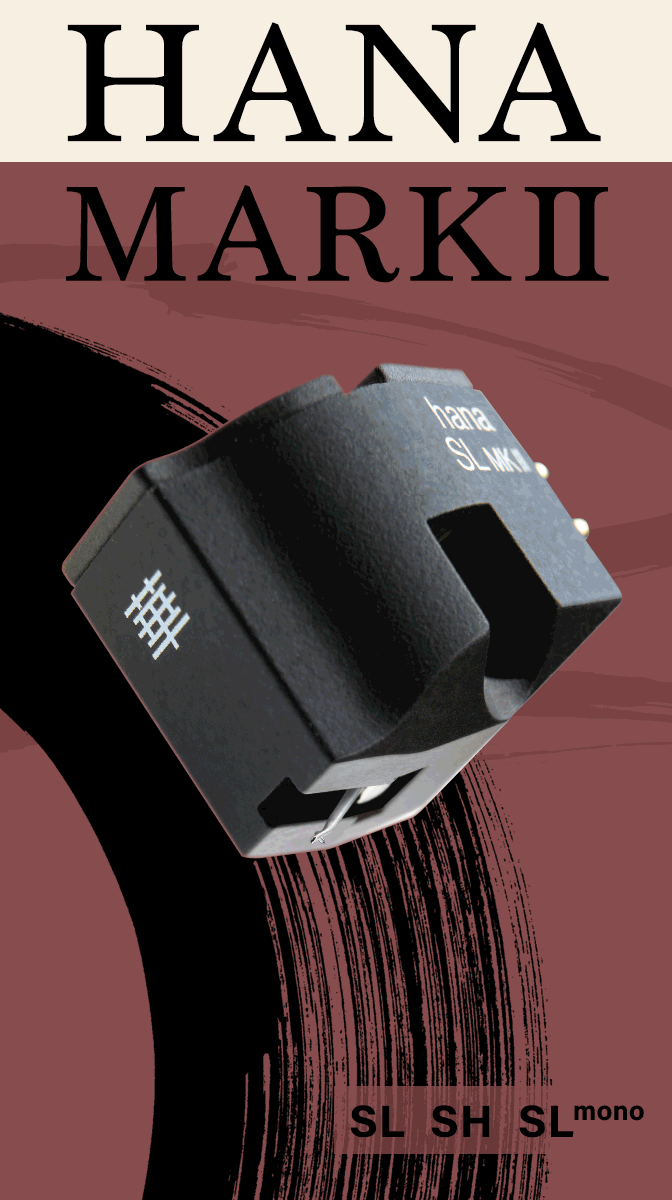A Transrotor Turntable and Tonearm Combo Arrives Almost Ready to Play and Sets Up Easily
german beauty delivers bountiful bass and rhythm'n'pace solidity.
While the snarky part of my mind tends to include Transrotor turntables in the “alien spaceships from the planet chrome” category of decks, the Strato Nero turntable that showed up for review (delivered by truck, not saucer) complete with TRA-9 tonearm again confirmed that my snark is not to be trusted. What arrived instead of a spaceship was a massive, relatively traditional looking rectangular plinth, a TRA-9 tonearm already mounted, and an accompanying Konstant power supply and speed control. The Strato comes in two variations, one in white with an acrylic platter called the Strato Bianco, and one black with a POM platter, called the Strato Nero, which is the variant I received. Either color, with TRA-9 Tonearm and Konstant Power Supply, runs approximately $22,000 (I haven’t attempted to determine what, if any, effect tariffs may have on this price).
It arrived in 2 large boxes and a wooden crate stacked on a pallet, which altogether weighed just a bit more than 180 pounds.
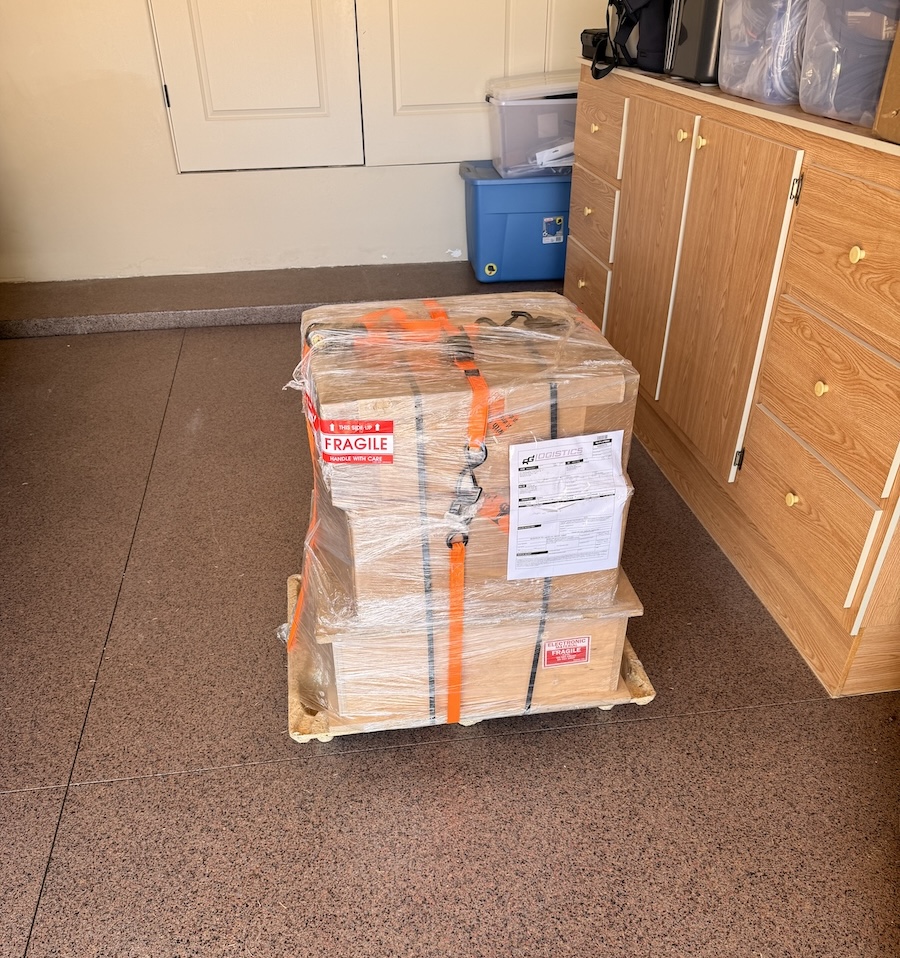
It was remarkably well packed and already almost fully assembled, making setup much easier than I expected. The tonearm was already mounted, so after oiling the bearing, placing the sub-platter, attaching the drive belts, and placing the platter, the turntable was ready for the top of my rack. The tonearm also required very little in the way of setup, simply removing two transit bolts and attaching the two VTA adjustment bolts. After that, just attaching the cable from the Konstant motor control and plugging the phono cable into the base of the tonearm using a straight DIN plug. I did my usual cartridge setup routine using a set of Wally Tools (not included with the Strato Nero), and the turntable was ready to make music. The Konstant power and speed control has 33 and 45 rpm choices, and the actual platter speed can be adjusted via two small pots accessible from the front panel.
For this review I used a My Sonic Lab Ultra Eminent EX cartridge, with a brass shim from WAM Engineering, and alternated between two phonostages: A Sutherland Dos Locos and an Esoteric E-02. From those the signal ran into an Allnic L-8000 DHT Preamp, then into a Pass Labs XA-25 Amplifier, which powered a pair of Klipsch La Scala AL-5 speakers. The interconnects and phono cable were all Silver Apex cables from Analysis Pro, and the speaker cables were Cardas Clear reflection. Power came from the wall through an AudioQuest Hurricane cable into a Puritan Audio Laboratories PSM1512 Power Conditioner with a Puritan City Ultra GroundMaster. Power cables to components were all from Triode Wire Labs.
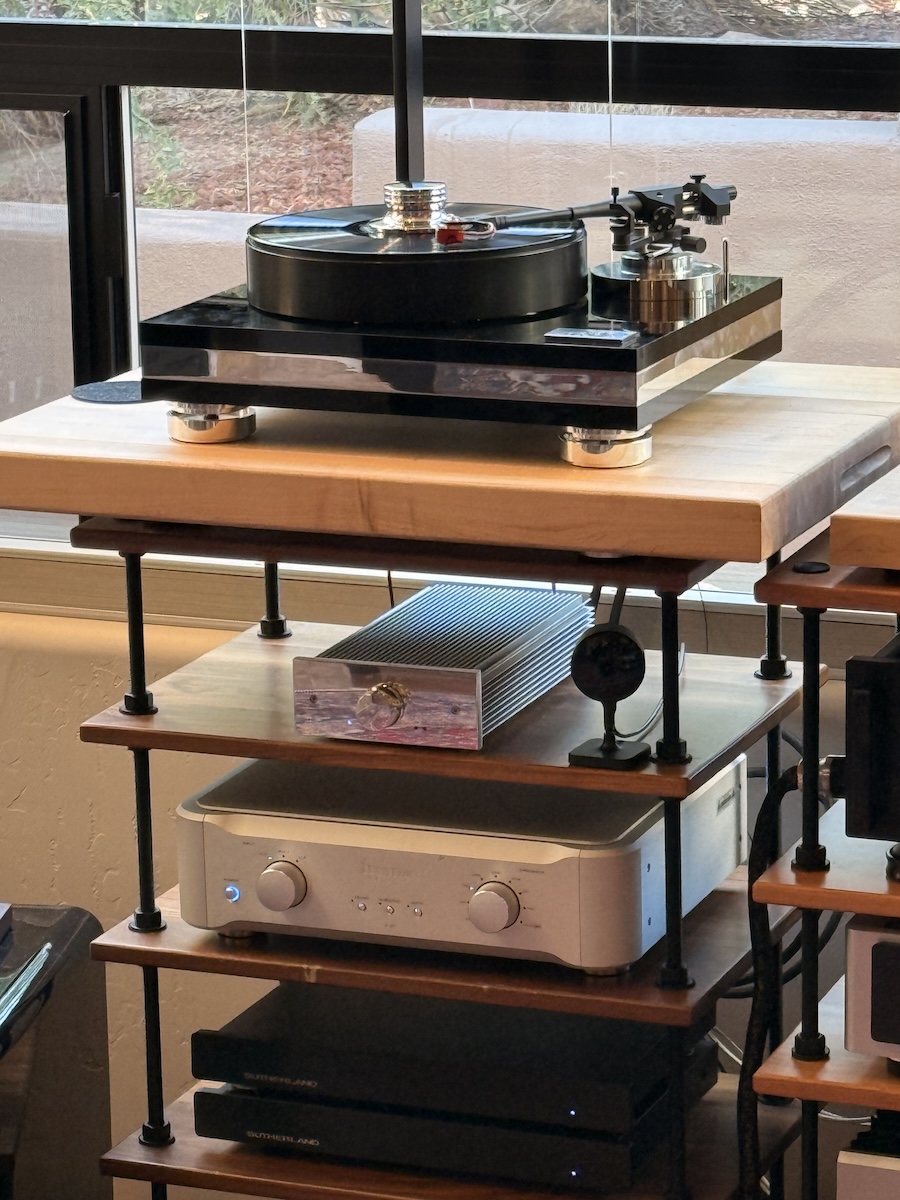
As I was setting up the Strato Nero I had a chance to get on a zoom call with Dirk Räke, Transrotor CEO, who walked me through some of the table’s design and engineering. The plinth is a massive 3-part sandwich of 30mm aluminum between two 20mm layers of acrylic, with a circular cutout in the top acrylic layer. The three-motor and bearing assembly secured within a separate thick aluminum block, sits isolated, resting on a half dozen rubber dampers which also isolated it from the massive aluminum tonearm mount bolted to the top acrylic layer.
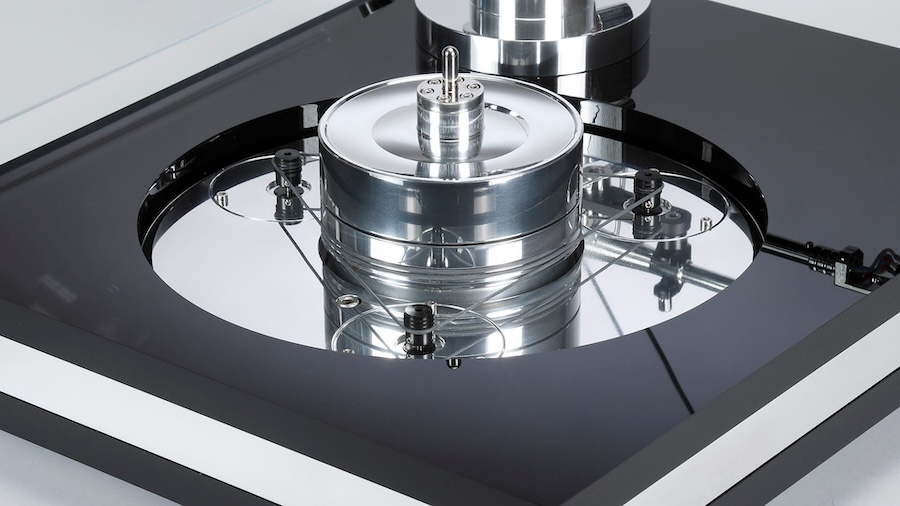
Dirk also pointed out the subplatter, which is sliced horizontally like a cake – the top layer of which rest on the lower layer, with the two layers coupled together via a trio of strong, attracting magnets. Dirk explained that this flexible magnetic connection in which the two layers can somewhat "flex" against one another is designed to smooth any fluctuations produced by the trio of synchronous motors and belts driving the lower layer of the subplatter. The assemblage is called a “Transrotor Magnetic Drive” bearing. The equidistant motor design equalizes the motor/belt pull on the bearing, which should help ensure smooth platter rotation and good wow and flutter measurements. The platter itself, an approximately 11.5 pound, thick solid slab of low resonance POM, rides on the top layer of the subplatter. The platters's chamfered edge eases record removal from the rotating platter if you choose to go that route. A record weight is included.
The plinth rests on three adjustable feet that were remarkably easy to adjust and stayed adjusted the entire two months the Strato Nero was in my system. The plinth is drilled for one tonearm, and as I said before, the review unit came pre-mounted with Transrotor’s TRA-9 tonearm.
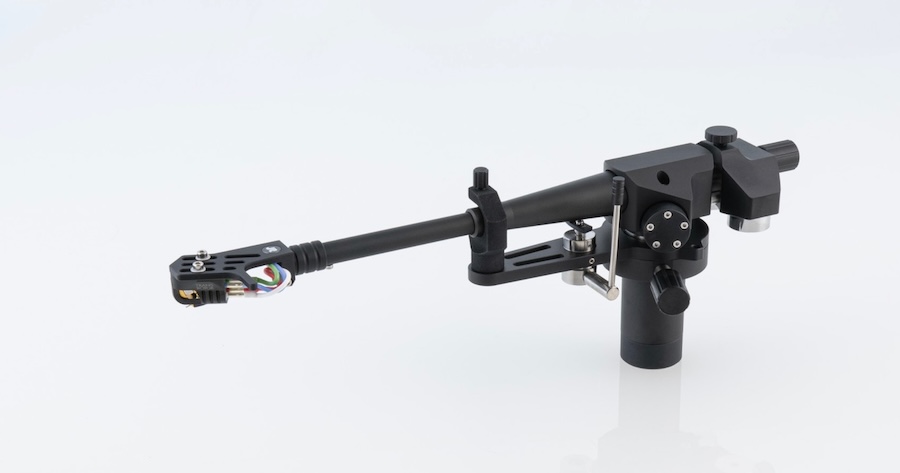
The TRA-9 itself uses a familiar gimbal bearing design. The tube is aluminum, consisting of two nested tubes of different alloys and conical sections, which is intended to effectively damp resonances. It uses a magnetic anti-skating mechanism, the height is adjusted by means of two external screws, and it has interchangeable counterweights to allow a wide range of cartridge weights, and tracking force is adjustable without any tools. The headshell is not removable, and the internal cabling is Seven Stream silver cable from van den Hul. The review unit was a 9 inch arm, and it is also available in a 12 inch size. Effective mass is 18 grams, making it a medium-heavy arm.
As I was setting up the Strato Nero, the RPM app on my iPhone showed both the 33 and 45 speeds were running a bit fast. Adjusting to the correct speed was easy, and it held solidly and precisely at both speeds the entire review period. After adjusting the speed, the RPM app consistently showed a low wow/flutter of .23%, though these app W&F measurements should not be considered scientifically reliable. Leveling was remarkably easy using the adjustable feet, and when I grabbed the stethoscope and applied it to the top of the plinth while the platter was turning all I heard was silence.
Solid Sound
Immediately the Transrotor Strato Nero and TRA-9 produced a startling amount of bass in my system – controlled, articulate, and clear. That was my initial impression, which continued throughout the time I enjoyed the Strato. The combination of the Strato and TRA-9 produced a controlled, clear, stable, wide soundstage that never wavered, The bass continued to impress, in depth, solidity, and articulation. The midrange and treble were also articulate, clear, and realistic, though lacking just a bit when it came to bloom and air and a sense of internal life.
On the subject of the Strato’s bass – as I noted above, it’s more than plentiful, extremely well-controlled and articulate, and as subterranean as the recording requires. At the same time, in my system and in my room, I found that quality to overwhelm the rest of the Strato and TRA-9’s sound. I’ve spent a lot of time and effort assembling a system that sounds balanced in my room – one example of that might be the My Sonic Lab Ultra Eminent EX cartridge, which could be considered to have a bit less high-end presence than some others. And I want to stress that my impressions are of the Strato and TRA-9 in my system, in my room. So while I do greatly admire the quality of the bass generated by my system with the Strato and TRA-9 in place, I consistently felt that the sonic balance was weighted too heavily toward the bottom end, particularly in recordings of acoustic instruments and human voices. I admit to not having experimented with speaker placement following the turntable install
I started with some acoustic music, immediately grabbing a dearly beloved 1975 copy of Rounder Records 0044, JD Crowe and The New South. Toe tapping ensued. The Strato was generating excellent pace and rhythm, all these legends clear and stable and distinct on the soundstage. Instrumental and vocal tones were natural and realistic, but just a bit muted rather than open and bright, and Bobby Slone’s bass was much more pronounced than I’d ever heard it. Overall, I felt the balance of the sound was weighted a bit toward the bass, with the voices and other instruments losing some of their tonality and some of that inner life I’m used to hearing in this disc.
Then on to the recent Acoustic Sounds stereo reissue of Side by Side: Duke Ellington and Johnny Hodges Plus Others, on the Verve Label, MG VS-6109, remastered by Matthew Lutthans. Again, the bass was pronounced, solid, and highly controlled, with the mids and treble articulate on a wide and stable soundstage, but missing a bit of that instrumental bloom and life. Which is not to say I didn’t enjoy it – I did – the prominent bass added some propulsive drive that I hadn’t previously experienced, and the richness of the mid and upper bass was very welcome under Johnny Hodges, Sweets Edison, and of course the Duke.
From there I grabbed The MoFi half-speed master of Little Feat’s Waiting for Columbus from 1979; MFSL 2-013. This worked a lot better for me than the previous acoustic discs, as the pace and rhythm was dead on, the bass propulsive, substantial, and articulate – and now the voices and instruments were losing none of their power and voice and inner life. Ok, this works beautifully. So beautifully that I heard all four sides twice.
Given that success, I tried the 2017 Japanese Vinyl Edition of Santana’s Lotus album: Sony SIJP 46-8. Again, I was loving this – rhythmic, clear, propulsive, with deep, fast, articulate bass, with the band spread across a wide and deep soundstage. And Carlos’ guitar absolutely shone as if lit from within.
CONCLUSION
I ended up spending a lot of time with the Strato and the TRA-9, listening to lot of different music, my overall impression being quite consistent with the discs above. I thoroughly enjoyed the time I had the Strato and TRA-9 combination in my system, and was remarkably impressed by the amount and quality of bass that combination produced through my system and in my room. It seems to be balanced a bit heavier in the bass than seems to work the best with acoustic and classical music, but when spelunking in the areas of my collection categorized as "More Rock than Not" I universally loved what I was hearing and how I was hearing it. I highly recommend the combination of Strato Nero and TRA-9 for its ease of setup, impressive bass, propulsive pacing, and impressive stable soundstage. In particular, I think those whose listening habits skew toward what I categorize as "More Rock Than Not" or those who are seeking some truly impressive bass performance might enjoy this combination a bit more than most.
If that were me, and I decided to invite the Strato and TRA-9 into my system for good, I think I’d probably also continue the ouroboros system-building process by using a cartridge with a brighter, leaner sonic signature - something like an Ortofon Diamond perhaps. And I might also consider replacing the Allnic tube preamp with something solid-state – something a bit more crisp, open, and extended up top. The Strato and TRA-9 combination would certainly be a worthy place to start building a system, and while that combo’s bass was more dominant than I prefer through my system and in my listening environment, I think it would certainly mbe part of an excellent front end in a system more tuned to take advantage of its strengths.
Reference System: My Sonic Lab Ultra Eminent EX cartridge; Supatrac Blackbird tonearm; Pure Fidelity Harmony turntable; Sutherland Dos Locos phonostage; Esoteric E-02 phonostage; Allmic L-8000 DHT preamplifier; Pass Labs XA25 Amplifier; Klipsch La Scala AL5 speakers; Analysis Plus Silver Apex phono cables; Technics 1210G turntable with stock tonearm; Miyajima Infinity Mono cartridge; Lab 12 Melto2 phonostage; Grimm MU2 DAC/streamer/Roon core; Technics SLG700M2 CD/SACD player; NOS Telefunken tubes from the early 1960s; Interconnect cables from Triode Wire Lab; Cardas Clear Reflection speaker cables; Power cables from Triode Wire Lab; Puritan PSM1512 power conditioner with City Ultra Groundmaster; Degritter mkII LP cleaner.
Specifications
Strato Nero Turntable: 46 x 22 x 43 cm (W x H x D)
Warranty: 3 years
TRA-9 Tonearm:
Effective tonearm length: 232.8 mm (9 inches) , 308.2 mm (12 inches)
Tone arm distance: 232.8 mm (9 inches) , 308.2 mm (12 inches)
Effective mass: 18 grams (medium-heavy)
Connection cable: Length approx. 130 cmPure silver (van den Hul)


